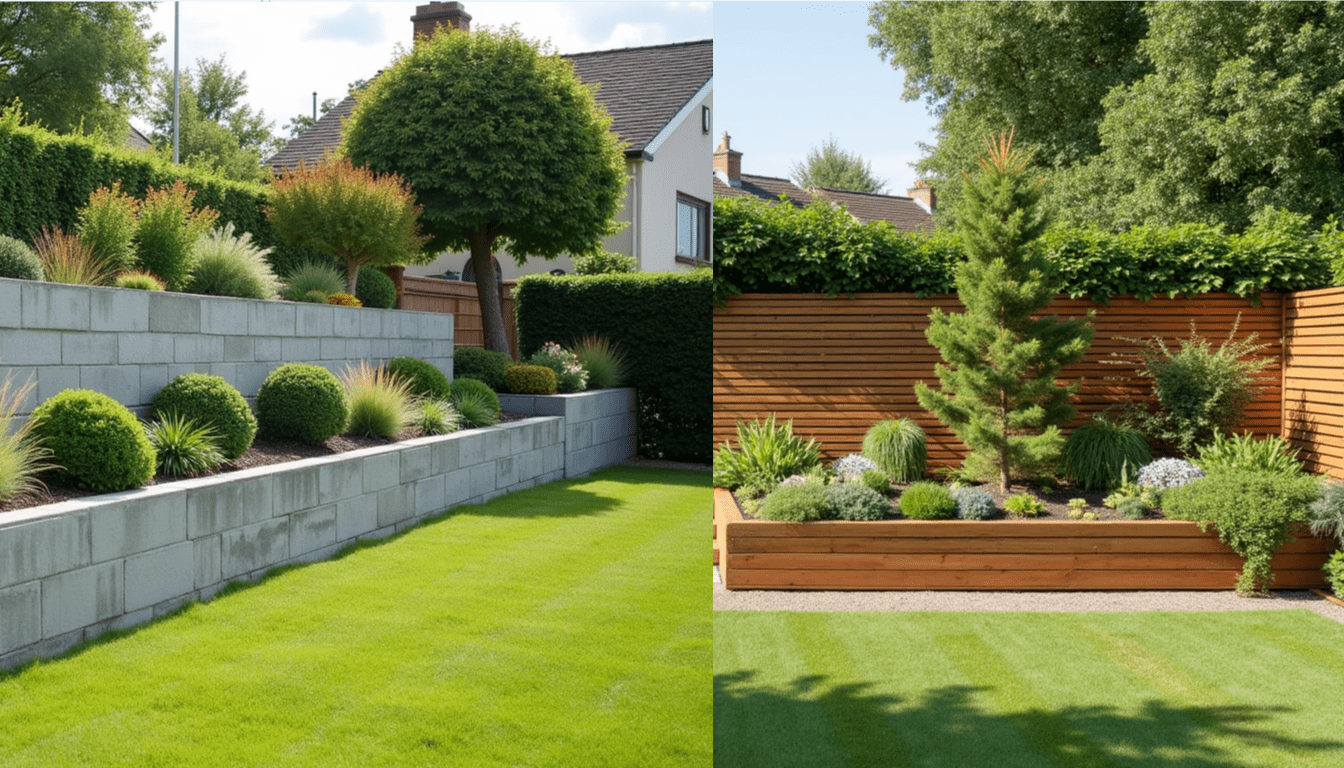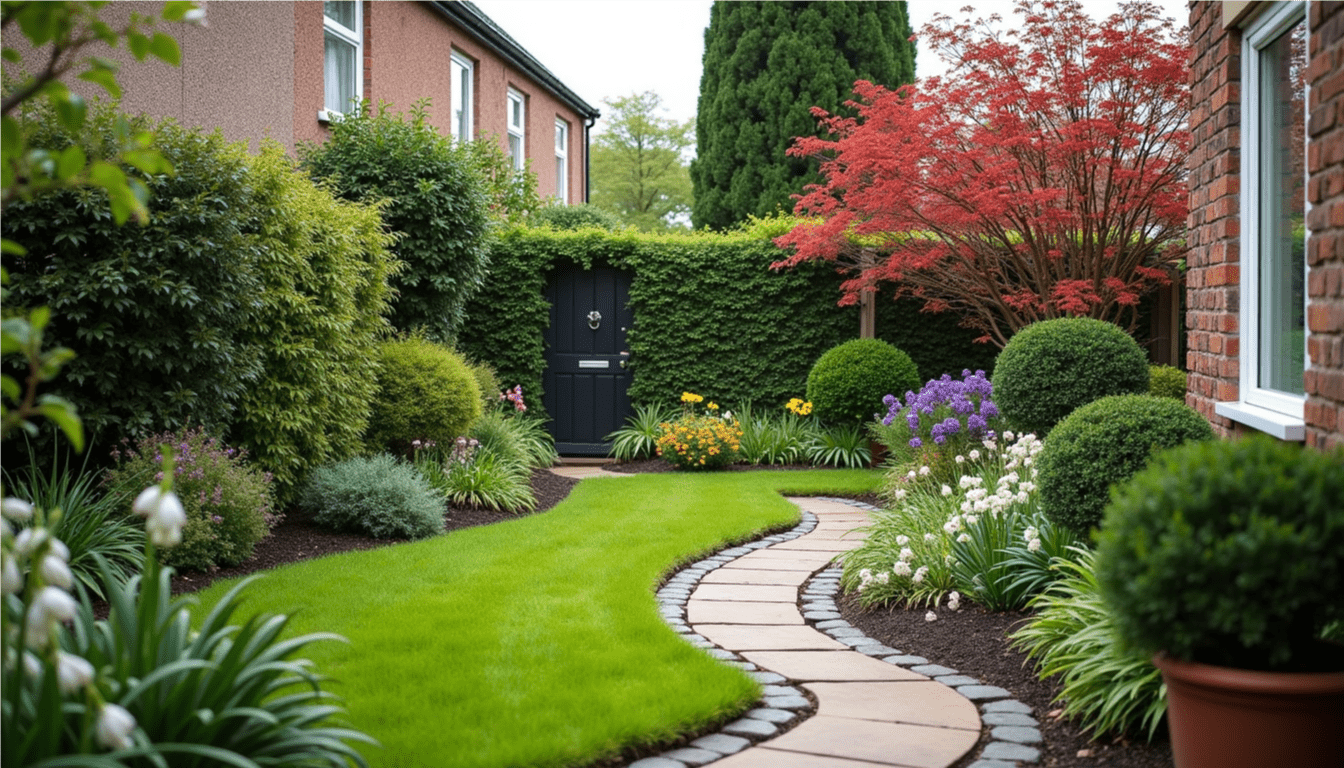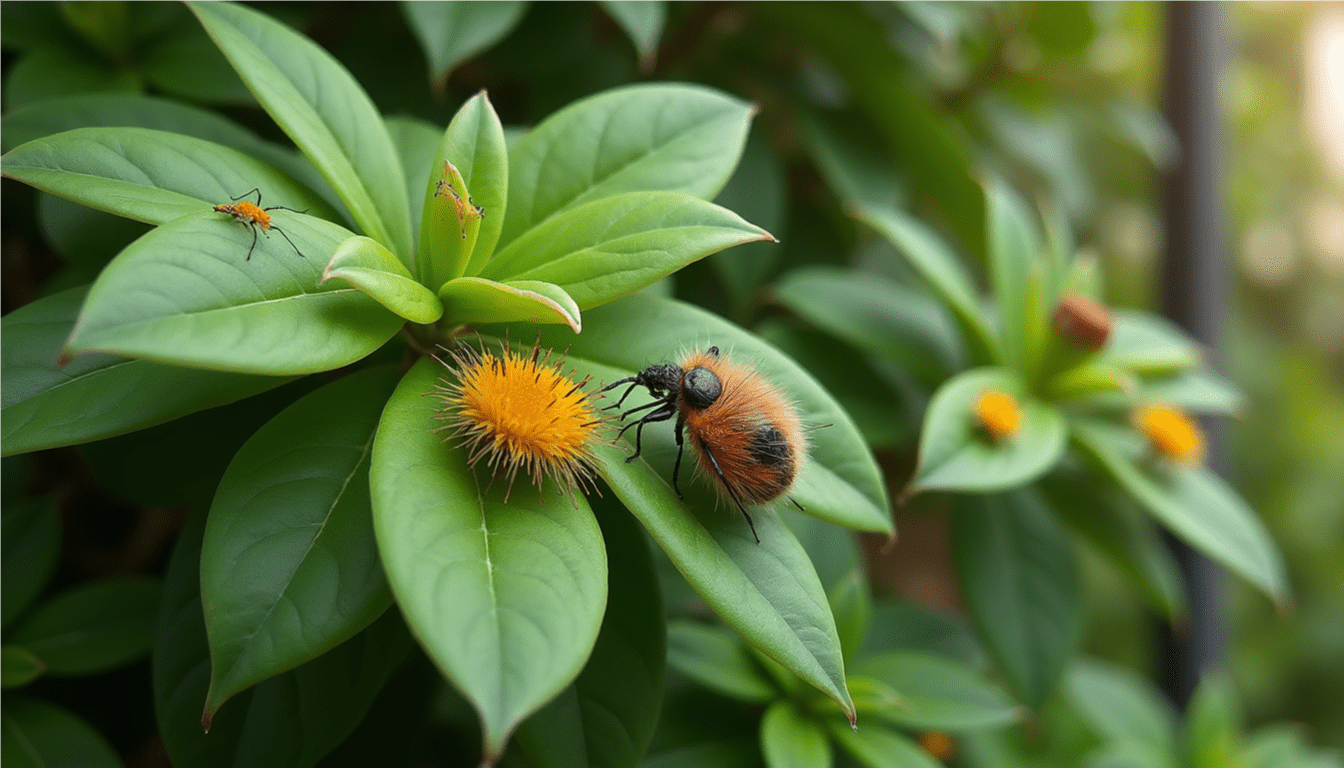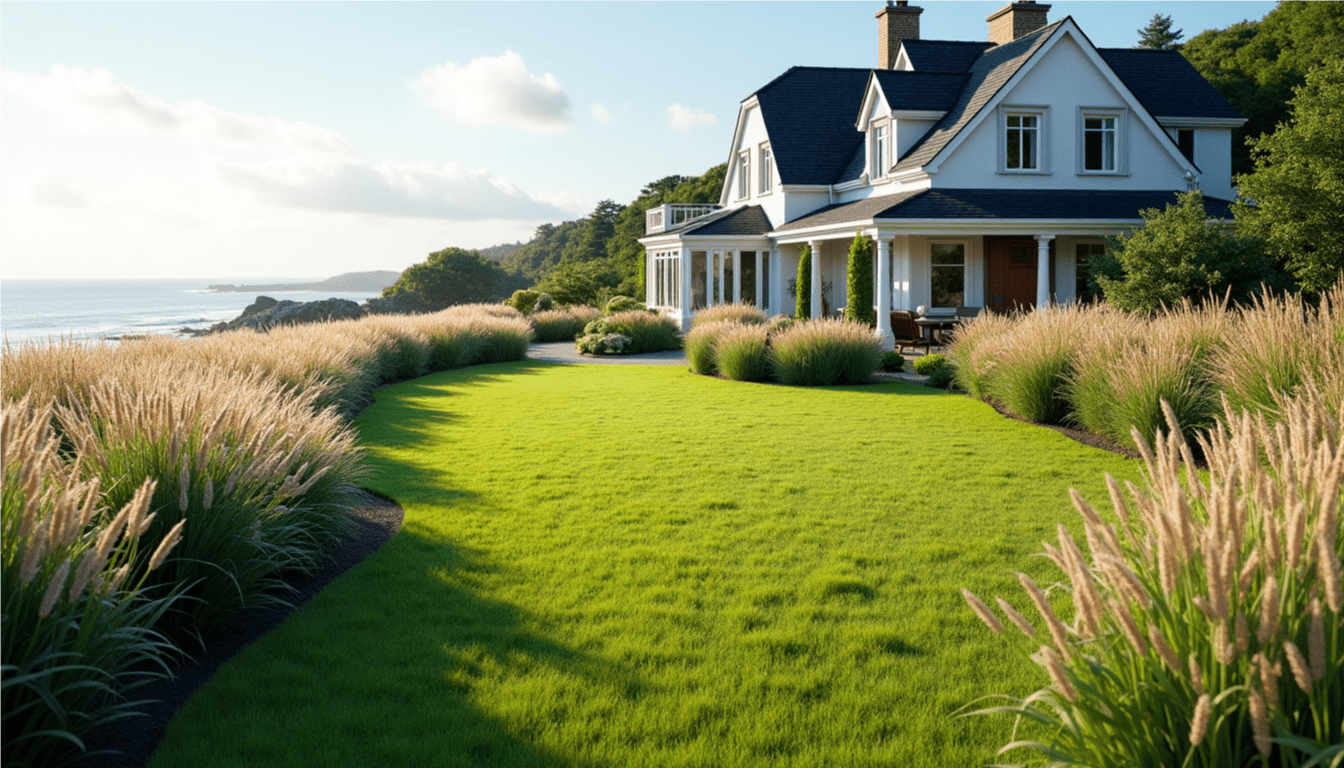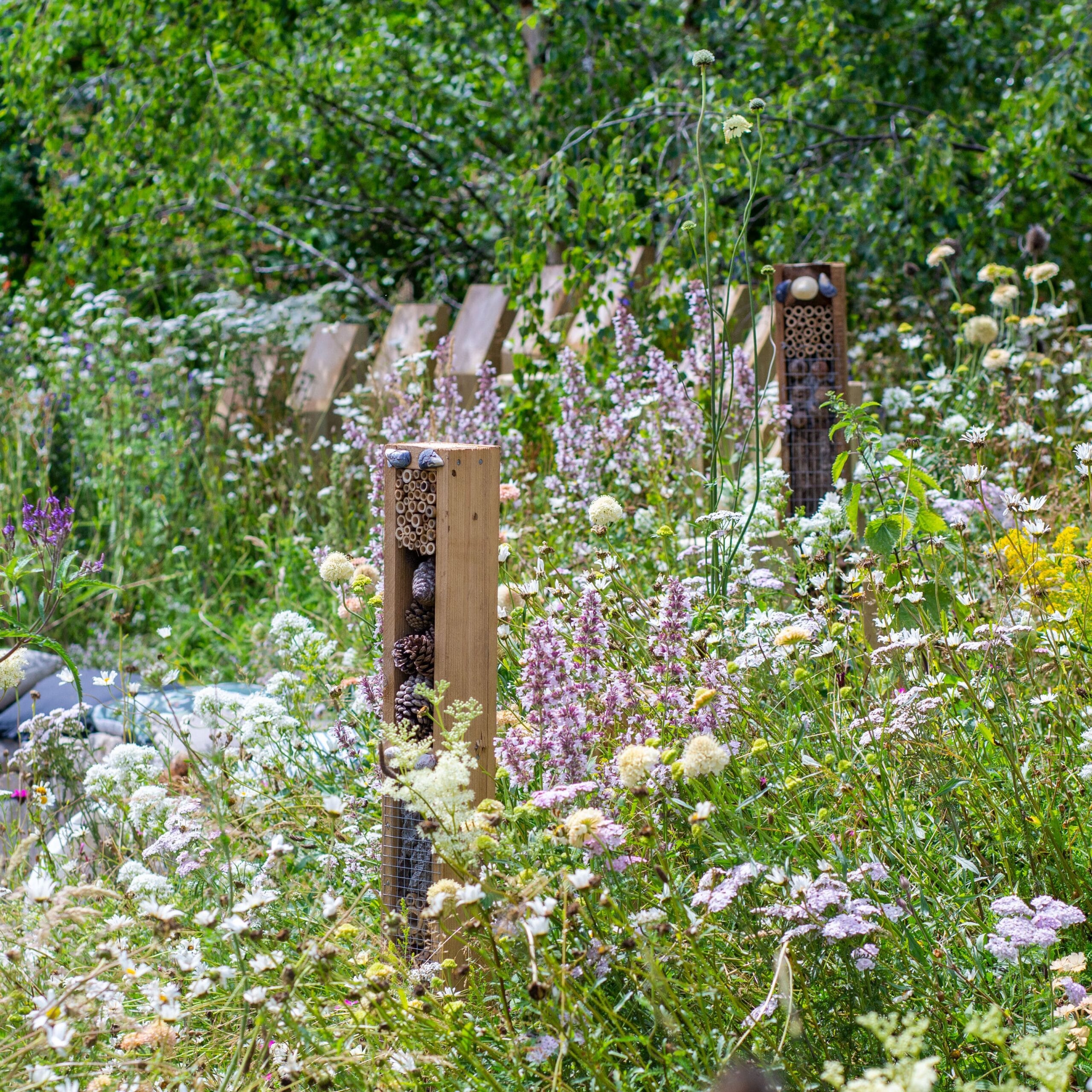
Key Points
- Salt-tolerant plants such as Griselinia littoralis and Cordyline australis are vital for successful coastal gardens in Dublin Bay, offering both protection and visual appeal.
- The first step in creating a successful coastal garden is to establish effective windbreaks with native species like Hawthorn and Scots Pine.
- Sandy coastal soils require particular preparation methods, including the incorporation of organic matter and strategic mulching, to support plant growth.
- Plants from New Zealand and coastal South America have naturally developed protective mechanisms against salt spray, making them perfect choices for Irish coastal gardens.
- Understanding your specific microclimate along Dublin Bay will help you choose the right plants that reflect the local flora and create a garden that truly belongs in its place.
The Coastal Garden Challenge in Dublin Bay: The Importance of Salt Tolerance
Gardening by the sea along Dublin Bay presents a unique set of challenges that require specialised plant selection. The relentless onslaught of salt-laden winds doesn’t just damage foliage – it fundamentally changes what can thrive in these exposed locations. When salt spray hits ordinary garden plants, it causes cellular dehydration and leaf burn that can rapidly devastate non-adapted species.
Seasoned gardeners are aware that the combination of strong winds, salt exposure, and typically sandy, free-draining soils creates a challenging microclimate. However, these very challenges can inspire some of Ireland’s most distinctive and characterful gardens. Eoin Gibbons of The Constant Gardener, who designs exceptional coastal landscapes along Dublin Bay, explains: “The planting and feel of a coastal garden should really reflect the local flora and fauna unique to its immediate environment, if you are to create a garden of its place.”
Instead of battling these harsh conditions with plants that find it hard to survive, successful coastal gardening in Dublin includes species that are naturally designed to handle these challenges. Plants that flourish in coastal Dublin usually have evolved special adaptations – waxy cuticles, silvery leaves with protective hairs, or specialized leaf structures – that enable them to shed salt spray or reduce its harmful effects. The 180-meter high Hill of Howth to the north offers some protection from the coldest winds, creating unique opportunities for Dublin Bay gardens that might not be available elsewhere along the coast of Ireland.
Book a Landscape Garden Consultation
A personal creative landscape garden designed to bring your vision to life!
Top Salt-Resistant Plants for Dublin Coastal Gardens
When it comes to plant selection for coastal gardens in Dublin Bay, plants that are naturally adapted to withstand salt exposure tend to outperform common garden varieties. Many of the most successful species come from coastal areas in New Zealand, South America, and other regions where they have evolved to deal with similar environmental conditions. These plants have developed a range of protections against salt damage, including special leaf structures and growth habits that help to deflect or reduce salt damage.
Sheltering Plants That Ward Off Sea Spray
Designing a successful coastal garden starts with creating effective wind barriers. Griselinia littoralis is one of the most resilient and reliable shelter plants for exposed seaside gardens in Dublin. This versatile plant, native to New Zealand, can grow up to 7-8 meters as a tree, but also thrives as a maintained hedge with the right pruning. Its most distinctive feature is the dense layer of fine hairs on the undersides of its leaves, which makes it remarkably resistant to salt-laden winds and also provides an effective windbreak for more fragile plants.
Decorative Grasses That Flourish in Seaside Breezes
Decorative grasses provide motion, texture, and all-year-round structure in seaside gardens while also showing impressive salt resistance. Ammophila arenaria (Marram Grass) grows naturally on sand dunes across Ireland and acts as both a lovely garden feature and a potent soil stabilizer. Its deep, binding root systems aid in preventing erosion in sandy seaside soils.
There are also some real standouts among the grasses. Festuca glauca, with its striking blue-gray color, forms neat mounds that rarely exceed 30cm in height, making it perfect for garden edges and rock features. Stipa tenuissima creates a wispy, cloud-like effect that dances beautifully in sea breezes while showing excellent resistance to salt damage. These grasses not only withstand coastal conditions but actively contribute to the authentic seaside character that makes Dublin Bay gardens so distinctive.
Blooming Perennials That Can Handle Salt Exposure
Even in harsh conditions, coastal gardens can provide stunning floral displays with the correct plant choices. Armeria maritima (Sea Thrift) is an obvious pick, as it originates from the coastlines of Ireland and creates lovely pink pompom flowers above tidy cushions of grass-like leaves. This adaptable perennial flourishes in the free-draining conditions common in Dublin Bay gardens. Another exceptional performer is Crambe maritima (Sea Kale), with its architectural blue-grey leaves and frothy white flowers that add drama to coastal planting schemes.
Coastal-Friendly Native Irish Trees

Native Irish trees bring a sense of belonging and ecological balance to gardens in Dublin Bay. The Hawthorn (Crataegus monogyna) is a standout tree that can endure the harsh coastal winds while also offering a safe haven for wildlife. Eoin Gibbons suggests not to stake these trees when they are planted, but rather let the winds naturally shape them. This will give them a unique, wind-sculpted look that truly embodies the coastal style.
The Scots Pine (Pinus sylvestris) is a year-round refuge that offers a visually striking orange-red bark and evergreen canopy. Its ability to establish in poor, sandy soils makes it particularly valuable in Dublin Bay gardens. Among native coastal trees, the Arbutus unedo (Strawberry Tree) is perhaps the most special. It thrives in slightly milder coastal microclimates. This remarkable small tree or large shrub features cinnamon-colored peeling bark, glossy evergreen leaves, and unusual fruit that resemble strawberries, providing multi-season interest in protected coastal positions.
Ground Cover Choices for Sandy Soil
Establishing a sturdy ground layer is crucial in coastal gardens. It helps to prevent erosion and suppress weeds in difficult conditions. Sedum acre (Biting Stonecrop) creates a blanket of succulent foliage that turns bright yellow when it blooms. It thrives in the driest, most exposed spots. Its ability to withstand drought makes it ideal for the free-draining sandy soils of Dublin Bay. Thymus serpyllum (Wild Thyme) spreads to form fragrant mats that release their aroma when brushed against. They attract pollinators while withstanding salt spray and drought.
In tougher locations, Erigeron karvinskianus (Mexican Fleabane) spills over walls and rocky areas, creating a carpet of small daisy-like flowers that fade from white to pink. Its ability to thrive in poor soils and withstand salt exposure makes it a gem for coastal gardens. These ground covers do more than just serve a practical purpose. They add texture and seasonal color to Dublin Bay gardens.
Book a Landscape Garden Consultation
A personal creative landscape garden designed to bring your vision to life!
Building a Flourishing Coastal Garden: Tips for Soil Preparation
At the heart of every thriving coastal garden is a clear understanding and amelioration of the usually sandy, nutrient-deficient soils of Dublin Bay. Rather than fighting against these conditions like many gardeners do, it is more beneficial to accept and improve the natural soil profile than trying to replicate inland garden conditions. The aim is to increase water holding capacity and nutrient content while preserving the superior drainage required by coastal plants.
When designing a garden, it’s important to work with the natural environment rather than trying to fight against it. This means choosing plants that are naturally suited to the local conditions and making specific adjustments to help them thrive. The soil along Dublin Bay is typically lacking in organic matter and nutrients and drains too quickly for many conventional garden plants. The trick is to find a balance between improving the structure of the soil and maintaining the drainage conditions that many salt-tolerant plants actually prefer.
“Loads of mistakes are made from rushing into the planting of a garden. It takes a good year or two to know your site and be sure of how you want to use it.” — Eoin Gibbons, The Constant Gardener
How to Improve Sandy Soil Structure
Dublin Bay’s sandy soils benefit from strategic organic matter incorporation that improves both water retention and nutrient availability. Begin by adding well-rotted compost or leaf mold to planting holes rather than attempting to amend entire beds, which can create problematic interfaces between soil types. This targeted approach focuses improvements where plant roots will develop while maintaining the overall free-draining nature of the site. For more tips on sustainable gardening, check out creating a wildlife-friendly garden in Dublin.
Key Nutrients Needed for Coastal Plant Growth
Coastal soils often do not have the essential nutrients needed for plants to grow and thrive. Nitrogen often quickly washes away through sandy soil, while phosphorus and potassium may be there but not accessible to plants. Instead of using regular garden fertilizers, coastal gardens do better with slow-release organic ones that provide continuous nutrition without causing fast, frail growth that is susceptible to wind damage. Seaweed-based products are especially suitable, providing trace elements that are naturally found in the coastal environment and also enhancing soil microbiology.
Ways to Use Mulch to Keep Moisture In
- Gravel and stone mulches that mirror the seaside landscape while minimizing evaporation
- Pine bark that decomposes slowly while increasing soil acidity for certain seaside species
- Shredded seaweed gathered after storms (washed first to get rid of excess salt)
- Locally sourced compost applied annually in thin layers to slowly improve soil quality
Put mulches down in early spring before soil moisture evaporates, keeping a 5-7cm depth that prevents weeds while letting water in. Avoid putting mulch against plant stems, which can cause rot in the damp seaside environment. For particularly exposed sites, consider holding organic mulches down with a sparse layer of stones until plants establish enough coverage.
During the establishment phase of coastal gardens, mulching becomes especially important as plants develop the root systems they need to tap into deeper moisture reserves. “A coastal garden by its very nature will be affected by strong winds,” Eoin points out, which greatly increases evaporation rates and plant stress during dry spells.
It is important to regularly maintain mulched areas, as seeds blown by the wind are more likely to take root in coastal gardens. Quickly removing any unwanted seedlings ensures they do not compete with the plants you want for the limited resources in the soil.
Getting Ready for Winter in the Fall
Autumn is the time to start winter-proofing your coastal garden in Dublin Bay. Start by trimming any dead or damaged growth on your perennials. This will prevent diseases from entering the plants and will keep them from breaking during winter storms. Mulch around the base of newer plants to protect them from temperature changes and salt spray buildup. Many coastal gardeners in Dublin use pine needles as mulch. This not only insulates the plants, but it also gradually makes the soil more acidic as it decomposes. This is beneficial to acid-loving coastal plants.
Think about using an anti-desiccant spray on broadleaf evergreens such as Griselinia and Pittosporum. This spray adds an extra layer of protection against winter salt spray and drying winds. The transparent polymer coating this spray provides reduces moisture loss through leaf surfaces without changing how the plant looks. For especially exposed gardens along Dublin Bay, you can put up temporary burlap screens. These screens can protect valuable specimen plants during the harshest winter months when storm-driven salt spray is at its worst.
Work with Your Coastal Environment, Not Against It

The most successful gardens in Dublin Bay are the ones that don’t try to mimic inland garden styles, but instead, embrace their unique coastal identity. As Eoin sagely points out, adhere to the principle of “right plant, right place” and stop fighting against conditions you can’t alter. Plants that have evolved in similar coastal environments around the world will naturally thrive more than those that need constant intervention to survive. This method not only makes for more sustainable gardens, but often leads to unique landscapes with genuine character and a true sense of place.
Think about adding components that mirror the coastal setting—weathered driftwood, stone sourced locally, and plants with silvery or glaucous leaves that are naturally found in seaside flora. These components help gardens feel like they belong in their environment rather than being forced upon it. The salt-filled air that poses a challenge to some plants is actually beneficial to others, preventing certain fungal problems and pest issues that are common in inland gardens.
It’s important to keep in mind that the coastal aspect of Dublin Bay offers certain benefits as well as challenges. The sea tempers temperature extremes, often giving coastal gardens a few extra degrees of warmth during the winter months. This microclimate enables experimentation with plants that might not make it in inland Dublin gardens, paving the way for unique and surprising plant combinations that embrace rather than resist the coastal environment.
- Study the local coastal vegetation for ideas on what naturally flourishes in your region
- Use maritime elements like shells, beach pebbles, and driftwood in your design
- Select plants with gray, silver, or blue foliage that visually link to the sea
- Create sheltered “rooms” within the garden where less hardy plants can flourish
- Plant in drifts and groups rather than specimens to mimic natural coastal plant communities
Commonly Asked Questions
Coastal gardening along Dublin Bay generates many inquiries from both new residents and longtime gardeners adapting to changing climate conditions. Understanding the unique characteristics of seaside environments helps gardeners make informed decisions about plant selection, maintenance practices, and seasonal care. The questions below address some of the most common concerns for those creating gardens in this challenging but rewarding environment. For more insights, explore this guide to must-have coastal plants.
Coastal gardening can be a challenge, but it also presents unique opportunities to create a garden with character and resilience. The secret is to work with nature rather than against it, choosing plants that have evolved to thrive in these conditions rather than fighting a constant battle with inappropriate choices. With the right approach, gardens in Dublin Bay can become showcases of sustainable beauty that celebrate their maritime setting.
Many of the most thriving coastal gardens in Dublin Bay feature design elements that reflect the beachfront environment while offering functional advantages. Raised berms constructed with sandy soil replicate dunes while forming protected planting areas. Large weather-beaten stones and boulders not only contribute to visual appeal but also serve as windbreaks and heat-storing thermal mass that regulates temperature changes for adjacent plants. For those interested in creating a garden that supports local wildlife, consider exploring how to create a wildlife-friendly garden in Dublin.
What’s the watering schedule for a coastal garden?
Coastal gardens in Dublin Bay don’t need to be watered as often as inland gardens, but when you do water, it should be a deep watering. The sandy soil in these areas drains quickly, so it’s important to conserve water during establishment. Newly planted plants should be watered deeply twice a week during the first growing season, and then you can gradually reduce the frequency as the plants get established. After they’re established, most salt-tolerant coastal plants don’t need much extra water, unless there’s a long dry period. When you water, focus on the root zone, not overhead, to reduce evaporation and prevent salt from concentrating on the leaves. For more tips on creating a sustainable garden, check out how to create a wildlife-friendly garden in Dublin.
During prolonged onshore winds, you need to be extra vigilant about watering, as these winds can significantly increase the rate of transpiration and moisture stress, even if the temperature is not particularly high. When coastal plants are suffering from drought stress, they often display symptoms such as curled leaves, a change in color to a gray-blue shade, and early flowering as the plants try to complete their life cycle under these stressful conditions.
Is it possible to grow vegetables in a garden exposed to salt?
Yes, it is possible to grow vegetables in the coastal gardens of Dublin Bay. You just need to choose the right location in your garden and have the correct protection strategies in place. Ideally, you should place your vegetable beds in the most sheltered part of your garden, preferably behind windbreaks that you can create using salt-tolerant shrubs like Griselinia or Escallonia. You can create an optimal growing environment above the native sandy soil by filling raised beds with imported compost-rich soil. Some vegetables are more salt-tolerant than others. For example, artichokes, kale, beets, and spinach often do well in coastal settings. However, more sensitive crops like beans and peppers may need additional protection.
Why not include edible salt-tolerant plants such as sea kale (Crambe maritima) and samphire (Crithmum maritimum) which thrive in coastal conditions? These plants not only offer unique culinary ingredients, but also blend seamlessly into decorative coastal planting schemes. For particularly exposed sites, portable cold frames or clear windbreak material can offer extra protection during the growing season, while being removed during calmer periods.
When should you plant in a Dublin coastal garden?
The best time to plant in a coastal garden in Dublin Bay is early autumn. The soil is still warm from the summer, which helps the roots grow, and there is more rain, so you don’t need to water the plants as much. If you plant in the autumn, the plants have a few months to grow their roots before they have to deal with the summer drought and salt stress. You should avoid planting in the late spring and summer because the wind can dry out the plants and the salt spray can stress the plants before they have a chance to grow. If you have a plant that is very sensitive, you can plant it in the early spring after the worst winter storms are over. This gives the plant a second chance to grow successfully.
How do I safeguard new plants from salt damage during establishment?
Newly planted vegetation needs temporary protection until they develop the necessary adaptations to tolerate salt exposure. For the first season, erect temporary windbreaks using burlap screens or proprietary wind-break material around valuable new specimens. After storms laden with salt, water plants thoroughly to rinse the foliage and leach accumulated salt from the root zone. To protect soil from salt accumulation while preserving moisture, apply a thick organic mulch. Consider using seaweed-based foliar sprays, which not only provide nutrients but may actually increase plants’ salt tolerance through compounds that strengthen cell walls and improve stress resistance.
Can climbing plants tolerate salt and thrive on coastal fences?
There are a number of climbing plants that do well on coastal fences and structures in Dublin Bay gardens. Trachelospermum jasminoides (Star Jasmine) is a great choice, with its glossy evergreen leaves and fragrant summer flowers, and it shows good salt tolerance once established. If you prefer a deciduous plant, Parthenocissus quinquefolia (Virginia Creeper) gives a fantastic display of autumn color and is low maintenance. In more sheltered coastal positions, Rosa rugosa cultivars can be trained as climbers and they offer salt tolerance, disease resistance, and repeat flowering throughout the season.
If you’re dealing with a particularly exposed location, you might want to think about salt-tolerant honeysuckles like Lonicera japonica ‘Halliana’ or Lonicera periclymenum. These plants not only smell great, but they’re also quite hardy. The climbing hydrangea (Hydrangea petiolaris) does well on north-facing coastal walls, offering both interesting foliage and impressive flower clusters, and it can tolerate salt-laden winds if it’s in a protected position. All of these climbers do best if you plant them in the fall, when the conditions are best for root development before they have to face the challenges of coastal exposure.
Designing a successful coastal garden in Dublin Bay means you have to be aware of the unique problems and possibilities these sites offer. By choosing salt-tolerant plants that naturally grow well in maritime conditions, you can create a garden that not only survives but also thrives in its coastal environment. Come to Windy Ridge Garden Centre for expert help in choosing the right salt-tolerant plants for your Dublin Bay garden and turn your difficult coastal site into a tough, attractive landscape that captures the beauty of Ireland’s amazing shoreline.
Book a Landscape Garden Consultation
A personal creative landscape garden designed to bring your vision to life!

